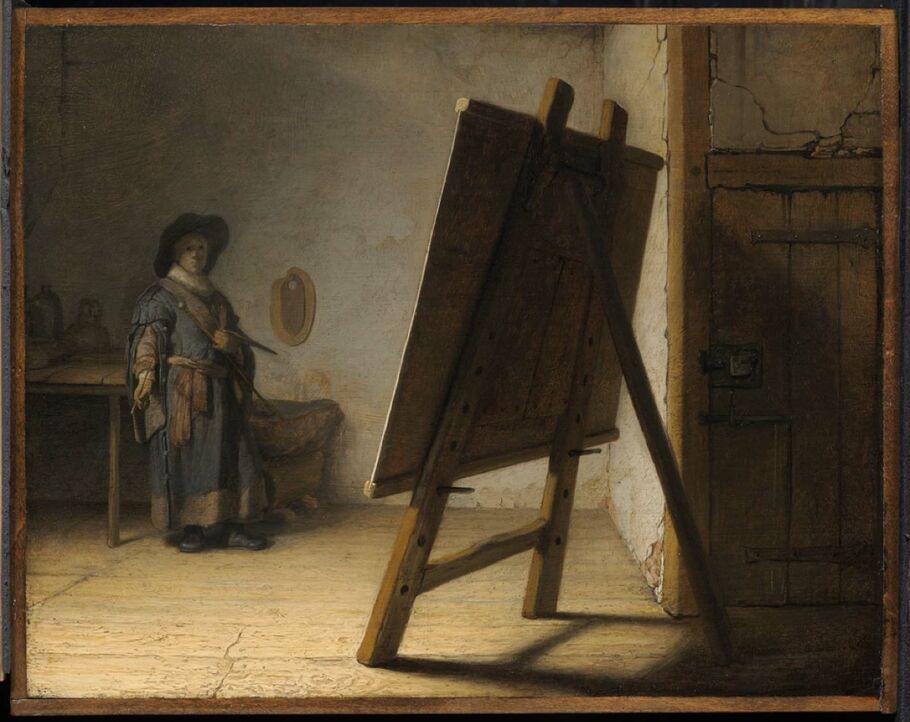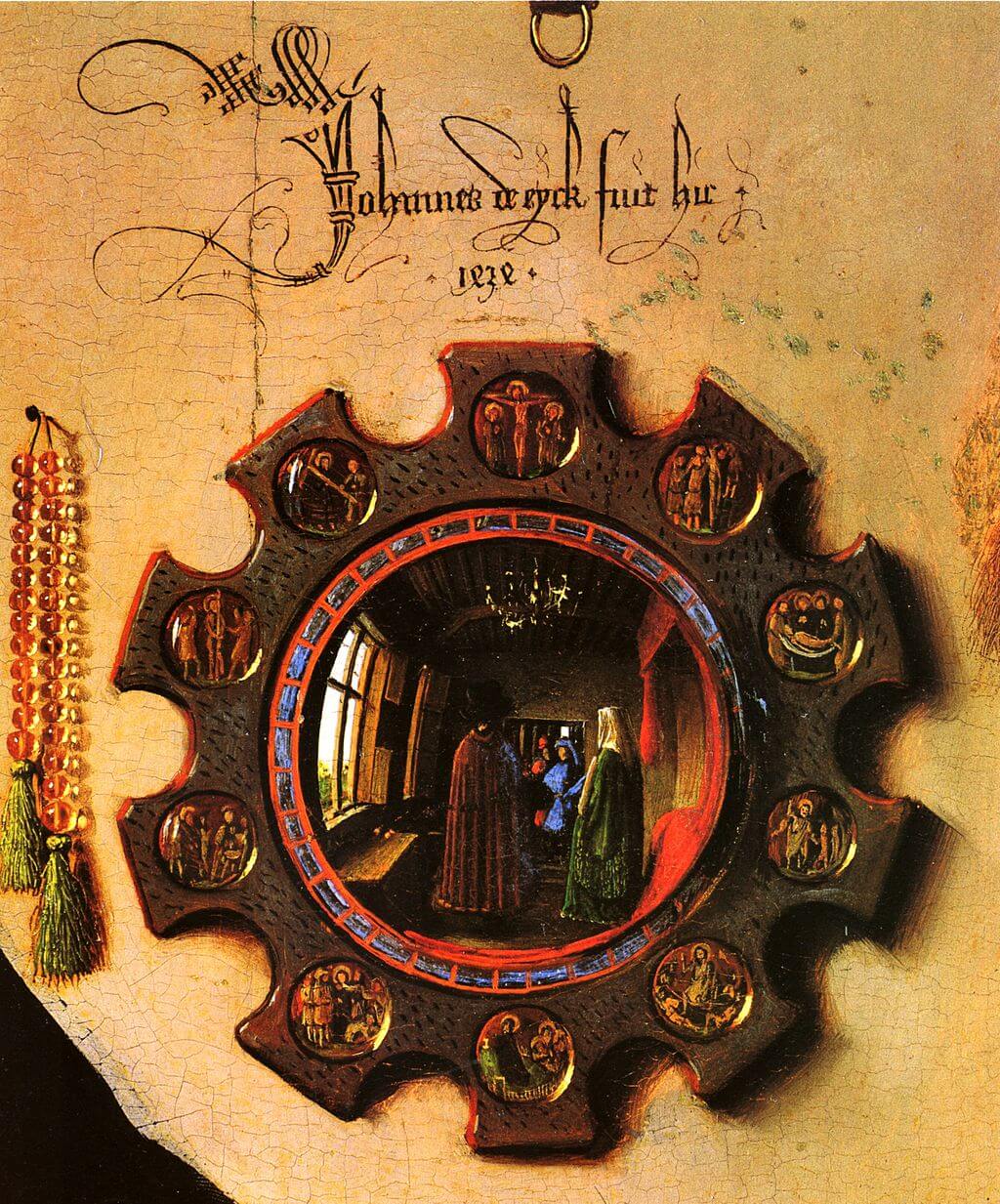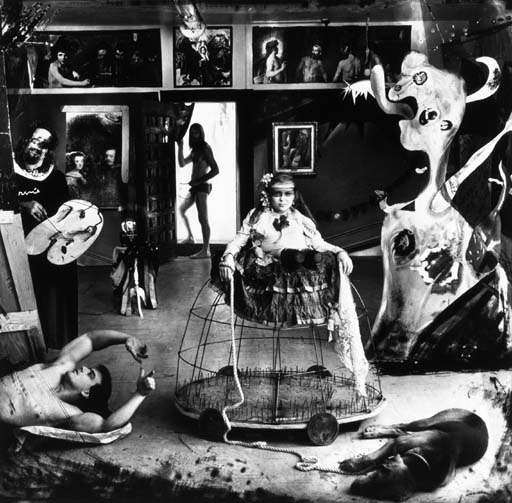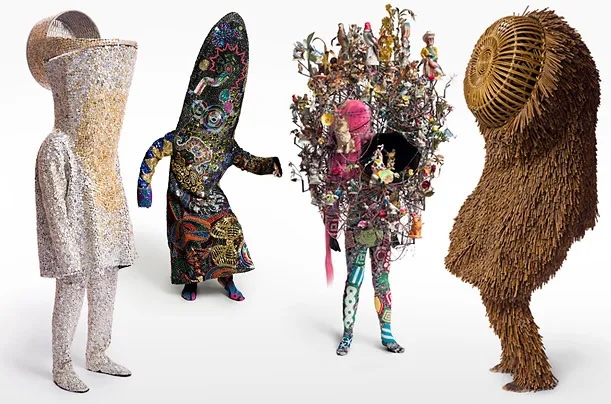Making The Modern Artist: VelazQuez
Maids of Honor
"Las Meninas" Introduction to The Order of Things, an Archeology of Knowledge by Michel Foucault.
This reading comes from French theorist Michel Foucault. Like most French theory, it deals in tiny details, and Foucault writes in a typically French style which constantly circles back around on itself to check for holes and to seek a new way of writing appropriate to the content (in this case, the way looking at and representing involve maneuvers of power).
Las Meninas part one from betsy towns on Vimeo.
***After watching this segment, you may feel more confused when you felt upon first looking at the painting. Please be ready to describe in class what you thought the subject of the painting was upon first seeing it, and what you think it is now.
Watching the next segment, imagine having a painter represent you. How much power do they have and how much do you have as you pose? How much power does the commissioner have?
Looking at You Looking at Me from betsy towns on Vimeo.
***In your notebook, comment on the types of representation and types of space you see here. In the next segment, Foucault finally introduces the main characters, and explains how knowing their names can mislead you into thinking you know the subject of the painting. Before you watch it, make some notes about what you think the subject is now, if it has changed.
Pure Reciprocity from betsy towns on Vimeo.
Foucault does not explain specifically why he thinks the names of the characters don't matter. But he gives hints. Can you grapple with why he believes this, and why he would use this close reading of a painting as the introduction to a book about knowledge and power.

Velasquez, Las Meninas (The Maids of Honor), 1656

Velasquez, Portrait of Mariana, p. 154

Rembrandt, Self Portrait in the studio, 1626

fyi... the rembrandt is tiny, 9" high; the velazquez is giant, 125 " high!I think I've still made the rebrandt too big by comparison!
Vermeer, Allegory of Painting,
Key Question: Can you make a case for why Las Meninas gets the title ‘first modern painting?’ What does your self-portrait look like?





 .
.
 Key from Wikipedia.
Key from Wikipedia.


Pablo Picasso, Las Meninas, 1957

Joel Peter Witkin, Las Meninas (Self Portrait), 1987

Eve Sussman, 89 Seconds at Alcazar, 2003

Manolo Valdés, Las Meninas, 2007
 Diego Velasquez, The Infanta Margarita, 1659
Diego Velasquez, The Infanta Margarita, 1659

Picasso, Infanta Margarita, 1957

Yasumasa Morimura, Daughter of Art History, 1989

Julie Heffernan, Self-Portrait as Infanta ;Maria Teresa Dreaming Madame de Sade, 1999, oil on canvas, 67 x 58 inches

| source |

8
- (1) Infanta Margarita Teresa of Spain
- (2) doña Isabel de Velasco
- (3) doña María Agustina Sarmiento de Sotomayor
- (4) the dwarf German, Maribarbola (Maria Barbola)
- (5) the dwarf Italian, Nicolas Pertusato
- (6) doña Marcela de Ulloa
- (7) unidentified bodyguard (guardadamas)
- (8) Don José Nieto Velázquez
- (9) Velázquez
- (10) King Philip IV reflected in mirror
- (11) Mariana, queen of King Philip, reflected in mirror

Pablo Picasso, Las Meninas, 1957

Joel Peter Witkin, Las Meninas (Self Portrait), 1987
Eve Sussman, 89 Seconds at Alcazar, 2003
Manolo Valdés, Las Meninas, 2007
Picasso, Infanta Margarita, 1957
Yasumasa Morimura, Daughter of Art History, 1989
Julie Heffernan, Self-Portrait as Infanta ;Maria Teresa Dreaming Madame de Sade, 1999, oil on canvas, 67 x 58 inches

No comments:
Post a Comment